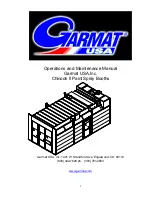
22
TUBE COMPOSER T1952
3.6.3 Suppressing instruments during recording
Another function of the BEHRINGER TUBE COMPOSER allows helpful correction of previously recorded
material. If, for example, an excessively loud bass drum needs to be suppressed, reduce all the equalizers
frequency bands above 150 Hz. This setting causes frequency specific compression, which reacts as soon as
increased energy is detected in this band. By increasing the threshold level, the compression can be made to
react only to loud pedal or stick actions. Generally, it can be said that relatively high threshold settings prevent
the overall sound from being impaired and lead to the compression of solo instruments or very loud sounds.
3.6.4 Emphasizing musical instruments during recording
On the other hand, you can use the BEHRINGER TUBE COMPOSER to bring out an instrument solo or a lead
vocal in a cluttered mix. Using the SC MON switch, match the frequencies of the equalizer to the frequencies
of the instruments to be emphasized and for this it is best to use a notch filter with a high slope.
Please make sure that in this application, you only reduce the amplitude of the selected frequencies. The
compression results in a subjective decrease in volume of the overall program material. Only the selected
frequencies coming from the equalizer remain uncompressed and are therefore perceived as being louder. This
inverse type of compression also helps to emphasize instruments during low level passages, so that they
become more pronounced.
3.6.5 Anticipated compression
If you feed the audio signal directly into the SC RETURN input and send the audio signal through a delay before
the audio input, the BEHRINGER TUBE COMPOSER can anticipate the need for gain change. With
experimentation, the effect can create a zero attack time at a given frequency. Additional delay beyond this
zero attack time will produce a special sound effect, similar to the dynamic envelope inversion you may
already be familiar with from reverse tape playback.
3.6.6 Voice-Over compression (ducking)
The BEHRINGER TUBE COMPOSER can be used to automatically reduce music to a background level, when
a presenter is speaking through a microphone. For this purpose, the BEHRINGER TUBE COMPOSER is used
as an automatic fader and is controlled by the presenters microphone, which is connected to the SC RETURN
input via a pre-amplifier. The music output and the announcers voice, are then mixed. This application is
known as voice-over compression or ducking and is commonly used in discos, radio stations etc.
3.6.7 Triggering additional sounds from a rhythm track
This technique is used to give a rhythm track more punch. For this purpose, only the expander/gate section
is required, while the compressor and peak limiter sections are switched off. The bass guitar track is
connected to the audio chain of the BEHRINGER TUBE COMPOSER, while the bass drum is connected to
the SC RETURN input. By activating the SC EXT switch, the bass guitar is now triggered by the bass drum.
Another application allows the sound of the bass drum to be supported or extended by other instruments
(synthesizers etc.), where the bass drum is used to trigger a new sound, which is then mixed into the track.
4. TECHNICAL BACKGROUND
The steady development of modern sound reinforcement systems has made it possible to produce almost any
level of loudness. Yet, the increase in loudness goes in line with a need for optimized audio quality. Today,
audiences expect to hear a powerful and transparent sound. To fully understand how the BEHRINGER
TUBE COMPOSER works you will need to know the meaning of a decibel and how audio dynamics function.
With the TUBE COMPOSER, as with any other type dynamics processor the amount of boost/attenuation
applied is expressed in decibels (dB). Whats a decibel? The abbreviation dB is not a unit (although often used
as one), but describes a logarithmic proportion. The entire dynamic range of human hearing (from the threshold
of audibility to a jet-airplane, see fig. 4.1) starts with about 0.00002 Pa (threshold of audibility) and goes up to
130 Pa (threshold of pain). This also means that 0 dB is not silence, minus infinity dB will mean absolute
silence.
4. TECHNICAL BACKGROUND













































